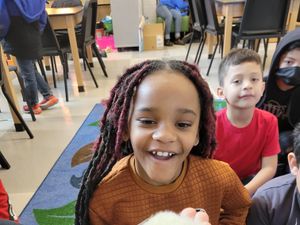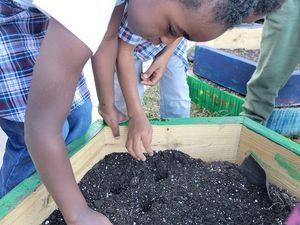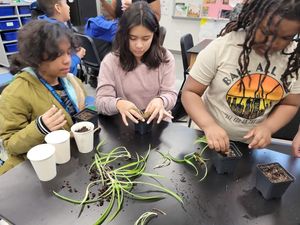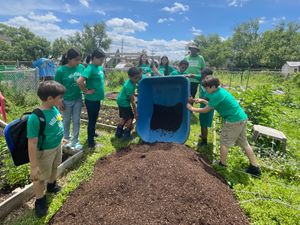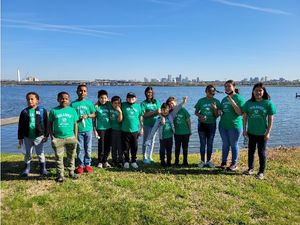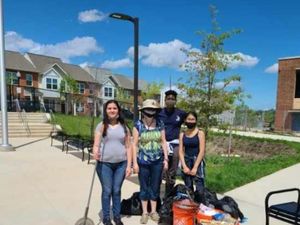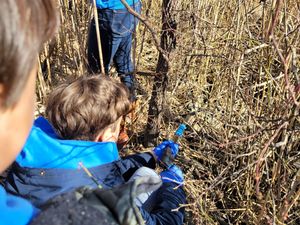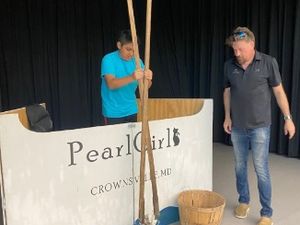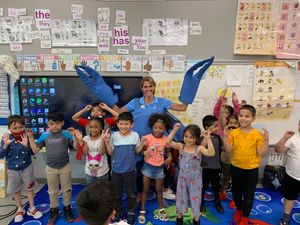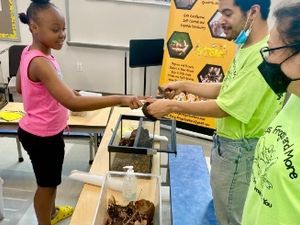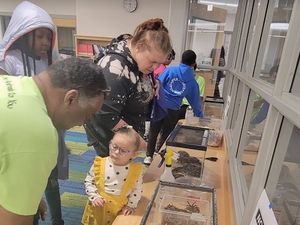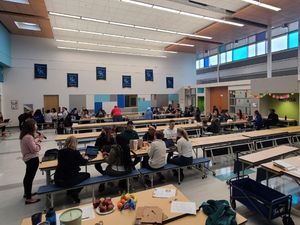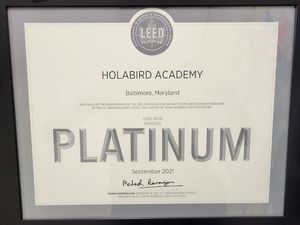Systemic Sustainability
Environmental Curriculum and Instruction
1.1 Curriculum and Instruction
Elementary & middle schools must provide one example of outdoor/environmental instruction per grade level.
High schools must provide one example of outdoor/environmental instruction in four subjects (which may include multiple different differents sciences).
Students engaged in a role-play activity to gain an understanding of how and why the Chesapeake Bay has been polluted over time. Students took turns adding different pollutants to a jar of clean water to visualize the process. Students were asked the overarching question "who polluted the water?" to discover that humans and their actions have led to an increase in water pollution. Students brainstormed ways to minimize and prevent water pollution in the future.
Students engaged in a hands-on experience to understand the impacts of water pollution. This picture shows a student putting pollutants in the water to demonstrate what happens to rivers over time due to a variety of human actions.
These students are observing what the water looks like after being polluted with a variety of different kind of materials.
This picture is of a student drawing a picture of and writing about a solution to reduce water pollution. her solution was for people to stop throwing trash in the streets and waterways.
Students engaged in a long-term project by adding different liquids to different plants over time and observing how each plant changed based on the liquid it received. Students recorded their findings and discussed why water is important, how plants grow, and why it is important to be sustainable.
This picture shows a chart with student responses to the question "how do plants grow?"
This picture is of a chart showing students' ideas about how to be more sustainable.
Students watched plants over time to observe what happens to plants over time when different kinds of liquids were added to them.
This student added water to their plant to watch how it was affected over time.
These students added soda to their plant to observe how it affected the plant over time.
Students in first grade learned about how bulbs grow and different kinds of bulbs. Each student planted a garlic clove in hexagonal beds that were constructed by High School interns at Baltimore City Public School's Great Kids Farm.
All second grade students learned the definition of the word "environment." Students then took magnifying glasses, whiteboards, and markers outside to observe biotic and abiotic organisms in our school's environment.
Students found a praying mantis in our outdoor learning area. They observed it's actions with a magnifying glass and drew pictures of it.
Students observed native plants and the pollinators flying from plant to plant. Students drew pictures of the bees and plants they saw in this garden bed.
Students brought their drawings inside to share with their peers and discuss the variety of organisms in our local outdoor ecosystem.
Students learned how to estimate the age of a tree by counting the number of rings on a tree circle. Students practiced counting rings and guessing the age of different types of trees. They made their own tree circles on paper to show how many rings they would have if they were a tree.
Students worked in pairs to estimate the age of circles that were cut from different trees.
Students worked together to estimate the age of a large tree circle.
This picture shows an example of one of the tree circles a student made to represent their life. She included a variety of events that happened during each year of her life.
4th grade students learned about the harmful effects of using too much energy. They engaged in a classroom energy audit activity to build awareness of how much energy they use in their classroom and school every day. Students in this class made signs to post up by light switches as reminders to turn off the lights when leaving the room.
This is a sign that a student made to encourage others to conserve energy by turning off the light when leaving a room.
This is a sign that a student made to encourage others to conserve energy by turning off the light when leaving a room.
This picture shows a group of 4th grade students that are engaged in the process of completing a classroom energy audit.
Each student completed an energy audit to track how much energy they used in their classroom. They used their audits to come up with solutions for how to reduce their daily energy use at school. Many students chose to make signs to post by light switches to inform others that turning off lights is an easy way to reduce their energy usage.
5th grade students learned about the harmful long-term impacts of plastic on the environment. They learned about bioplastic and the benefits of using biodegradable materials. Students then made corn-based bioplastic.
Students learned the terms "bioplastic" and "biodegradable" and then added them to our sustainability word wall.
Students were so excited to make their own plastic using biodegradable, corn-based materials!
They practiced molding their bioplastic into different shapes to demonstrate how the plastic could be used as a base for commonly used every day items.
6th grade students learned about what is and is not recyclable, how the recycling process works, and why it is important to recycle. Students made posters to put up around the school to spread awareness about why people should recycle and what is recyclable.
7th grade students learned about native and invasive plants. Their task was to read clues about a plant and then answer questions to give that plant a watershed score. The scores indicated whether that plant was a native or invasive species. At the end of the lesson students discussed the plants on each list and what commonalities they noticed between native and invasive plants. Students identified that Black Eyed Susans are native to Maryland, so following this lesson they planted Black-Eyed Susan seeds.
8th graders learned about native plants and the importance of pollinators. Students then went outside and transplanted native plants to start a native pollinator garden.
1.2 Green School Awareness
1.2.1 School Wide Awareness - Staff
Demonstrate that all school personnel are aware of your school's Green School status and application process.
All staff are aware that Holabird Academy is applying to become a Green School. The Green School application process has been communicated to the entire staff via email, in person, and through the school's staff newsletter.
The Green Schools application process was reviewed with the whole staff. Information was shared about what it means to be a Green School and the objectives that would need to be met with examples of documentation. Staff were given a link to a Google folder that was created so that everyone in the school could contribute to the process. The slide deck that was used to introduce the application process, professional development agenda, and sign in sheets are attached.
This email was sent to the whole staff to make them aware of the Green School's application process.
PD 1.23 Sustainability Slides (1.81 MB)
This is the slideshow that was presented at the whole-staff meeting on January 23rd to inform staff about the Green School Application Process and other sustainability updates.
2023-01-23_181338 (1.71 MB)
This sign-in sheet is for both the all-school awareness of our Green School application AND the professional development session.
Jan 23, 2023 PD Agenda (52.17 KB)
This was the professional development day agenda. This agenda includes time allotted for staff to be informed about the Green School's process as well as for the workshop provided by Great Kids Farm.
1.2.2 School-Wide Celebration
Demonstrate how your school celebrates beig a Green School by hosting a school-wide environmentally-focused event open to all students.
Our school embraces every opportunity to implement and celebrate sustainability. Some of our school-wide environmental events have included a Pumpkin Drive and a Lights Out Day. These events were celebrated throughout the entire school, involving both students and staff.
[school-wide celebration led by individual teachers in their classrooms.....] This year students identified that they noticed a large quantity of rotting pumpkins throughout their neighborhood. The Green Team decided to host a school-wide pumpkin drive to collect and compost rotting pumpkins and raise awareness about the harmful effects of food waste. We set a goal to collect 40 pumpkins and met that goal! We held a pumpkin party for each student who brought in a pumpkin to celebrate that we met our goal.
The entire school participated in a "Lights Out Day" celebration to promote awareness about energy consumption and the impact people can have by proactively conserving energy. Students on the Green Team made "Energy Patrol" badges and reminded teachers and students throughout the building to turn their lights off and unplug unnecessary devices throughout the day. Our building has an energy dashboard which provides a daily report of how much energy is used in the building and for what purpose. the data provided by the energy dashboard on Lights Out Day showed a decrease of 400 kwh from the day before, which was a half day.
This is the data provided by the school's energy dashboard for January 30-February 2nd. Lights Out Day was held on Thursday February 2nd and the energy data from that day shows a significant decrease from other days that week (except Sunday when the school was vacant), indicating that a school-wide effort to conserve energy was successful!
This picture shows a class learning about the school's energy dashboard with the lights off.
This image shows a class having a morning circle during Lights Out Day.
These are 2 students who were on the "Energy Patrol" for Lights Out Day. It was their responsibility to periodically walk around the building and respectfully remind people to turn off their lights whenever possible in an effort to conserve energy.
This email was sent to staff after the event to celebrate the goal of decreasing the building's energy usage on Lights Out Day. Since there was a noticeable decrease, the whole school celebrated by turning off their lights for an hour and having classroom popsicle parties.
Lights Out Day Email (456.56 KB)
This is an email that was sent prior to Lights Out Day to remind teachers of the event and the purpose for it.
PD 1.23 Sustainability Slides (1.81 MB)
This was the slide-deck that was used to provide updates about the Green Schools application process to staff at a meeting on January 23rd. The 5th slide informed staff about the upcoming Lights Out Day.
Environmental Professional Development for Teachers
1.3.1 Environmental Professional Development for Teachers
Demonstrate that 10% of staff have completed an environmental PD. Instructional staff is defined as any staff that manages a gradebook.
- New Schools must have all PD completed within the past 2 academic years.
- Renewing schools must have all PD completed within the past 4 academic years.
A teacher who has participated in multiple workshops may only be counted once..
43 staff, of whom 26 were teachers, attended a professional development workshop led by Laura Menyuk from Baltimore City Public Schools' Great Kids Farm. This workshop focused on the benefits of Outdoor Learning.
26 teachers attended and engaged in a 2 hour workshop developed and facilitated by Great Kids Farm. Teachers discussed the impacts of outdoor learning on students' social, emotional, and academic development. Teachers also made plans for how to proactively provides their students with more outdoor learning opportunities.
PD 1.23 Sign In (1.71 MB)
This is the sign-in sheet which shows which staff members were in attendance at this professional development session.
Mental Health With Green Spaces (109.94 KB)
This is a presentation that a group of staff members developed during the professional development. Their group was given the task of explaining how being exposed to green spaces and outdoor learning opportunities can have a positive impact on mental health.
All of the teachers listed attended and engaged in a 2 hour workshop developed and facilitated by Great Kids Farm. Teachers discussed the impacts of outdoor learning on students' social, emotional, and academic development. Teachers also made plans for how to proactively provides their students with more outdoor learning opportunities.
PD 1.23 Sign In (1.71 MB)
This is the sign-in sheet which shows that this staff member was in attendance for the Great Kids Farm professional development workshop.
All of the teachers listed attended and engaged in a 2 hour workshop developed and facilitated by Great Kids Farm. Teachers discussed the impacts of outdoor learning on students' social, emotional, and academic development. Teachers also made plans for how to proactively provides their students with more outdoor learning opportunities.
PD 1.23 Sign In (1.71 MB)
This is the sign-in sheet which shows that this staff member was in attendance for the Great Kids Farm professional development workshop.
All of the teachers listed attended and engaged in a 2 hour workshop developed and facilitated by Great Kids Farm. Teachers discussed the impacts of outdoor learning on students' social, emotional, and academic development. Teachers also made plans for how to proactively provides their students with more outdoor learning opportunities.
PD 1.23 Sign In (1.71 MB)
This is the sign-in sheet which shows that this staff member was in attendance for the Great Kids Farm professional development workshop.
All of the teachers listed attended and engaged in a 2 hour workshop developed and facilitated by Great Kids Farm. Teachers discussed the impacts of outdoor learning on students' social, emotional, and academic development. Teachers also made plans for how to proactively provides their students with more outdoor learning opportunities.
PD 1.23 Sign In (1.71 MB)
This is the sign-in sheet which shows that this staff member was in attendance for the Great Kids Farm professional development workshop.
All of the teachers listed attended and engaged in a 2 hour workshop developed and facilitated by Great Kids Farm. Teachers discussed the impacts of outdoor learning on students' social, emotional, and academic development. Teachers also made plans for how to proactively provides their students with more outdoor learning opportunities.
PD 1.23 Sign In (1.71 MB)
This is the sign-in sheet which shows that this staff member was in attendance for the Great Kids Farm professional development workshop.
All of the teachers listed attended and engaged in a 2 hour workshop developed and facilitated by Great Kids Farm. Teachers discussed the impacts of outdoor learning on students' social, emotional, and academic development. Teachers also made plans for how to proactively provides their students with more outdoor learning opportunities.
PD 1.23 Sign In (1.71 MB)
This is the sign-in sheet which shows that this staff member was in attendance for the Great Kids Farm professional development workshop.
All of the teachers listed attended and engaged in a 2 hour workshop developed and facilitated by Great Kids Farm. Teachers discussed the impacts of outdoor learning on students' social, emotional, and academic development. Teachers also made plans for how to proactively provides their students with more outdoor learning opportunities.
PD 1.23 Sign In (1.71 MB)
This is the sign-in sheet which shows that this staff member was in attendance for the Great Kids Farm professional development workshop.
All of the teachers listed attended and engaged in a 2 hour workshop developed and facilitated by Great Kids Farm. Teachers discussed the impacts of outdoor learning on students' social, emotional, and academic development. Teachers also made plans for how to proactively provides their students with more outdoor learning opportunities.
PD 1.23 Sign In (1.71 MB)
This is the sign-in sheet which shows that this staff member was in attendance for the Great Kids Farm professional development workshop.
All of the teachers listed attended and engaged in a 2 hour workshop developed and facilitated by Great Kids Farm. Teachers discussed the impacts of outdoor learning on students' social, emotional, and academic development. Teachers also made plans for how to proactively provides their students with more outdoor learning opportunities.
PD 1.23 Sign In (1.71 MB)
This is the sign-in sheet which shows that this staff member was in attendance for the Great Kids Farm professional development workshop.
All of the teachers listed attended and engaged in a 2 hour workshop developed and facilitated by Great Kids Farm. Teachers discussed the impacts of outdoor learning on students' social, emotional, and academic development. Teachers also made plans for how to proactively provides their students with more outdoor learning opportunities.
PD 1.23 Sign In (1.71 MB)
This is the sign-in sheet which shows that this staff member was in attendance for the Great Kids Farm professional development workshop.
All of the teachers listed attended and engaged in a 2 hour workshop developed and facilitated by Great Kids Farm. Teachers discussed the impacts of outdoor learning on students' social, emotional, and academic development. Teachers also made plans for how to proactively provides their students with more outdoor learning opportunities.
PD 1.23 Sign In (1.71 MB)
This is the sign-in sheet which shows that this staff member was in attendance for the Great Kids Farm professional development workshop.
All of the teachers listed attended and engaged in a 2 hour workshop developed and facilitated by Great Kids Farm. Teachers discussed the impacts of outdoor learning on students' social, emotional, and academic development. Teachers also made plans for how to proactively provides their students with more outdoor learning opportunities.
PD 1.23 Sign In (1.71 MB)
This is the sign-in sheet which shows that this staff member was in attendance for the Great Kids Farm professional development workshop.
All of the teachers listed attended and engaged in a 2 hour workshop developed and facilitated by Great Kids Farm. Teachers discussed the impacts of outdoor learning on students' social, emotional, and academic development. Teachers also made plans for how to proactively provides their students with more outdoor learning opportunities.
PD 1.23 Sign In (1.71 MB)
This is the sign-in sheet which shows that this staff member was in attendance for the Great Kids Farm professional development workshop.
All of the teachers listed attended and engaged in a 2 hour workshop developed and facilitated by Great Kids Farm. Teachers discussed the impacts of outdoor learning on students' social, emotional, and academic development. Teachers also made plans for how to proactively provides their students with more outdoor learning opportunities.
PD 1.23 Sign In (1.71 MB)
This is the sign-in sheet which shows that this staff member was in attendance for the Great Kids Farm professional development workshop.
All of the teachers listed attended and engaged in a 2 hour workshop developed and facilitated by Great Kids Farm. Teachers discussed the impacts of outdoor learning on students' social, emotional, and academic development. Teachers also made plans for how to proactively provides their students with more outdoor learning opportunities.
PD 1.23 Sign In (1.71 MB)
This is the sign-in sheet which shows that this staff member was in attendance for the Great Kids Farm professional development workshop.
All of the teachers listed attended and engaged in a 2 hour workshop developed and facilitated by Great Kids Farm. Teachers discussed the impacts of outdoor learning on students' social, emotional, and academic development. Teachers also made plans for how to proactively provides their students with more outdoor learning opportunities.
PD 1.23 Sign In (1.71 MB)
This is the sign-in sheet which shows that this staff member was in attendance for the Great Kids Farm professional development workshop.
All of the teachers listed attended and engaged in a 2 hour workshop developed and facilitated by Great Kids Farm. Teachers discussed the impacts of outdoor learning on students' social, emotional, and academic development. Teachers also made plans for how to proactively provides their students with more outdoor learning opportunities.
PD 1.23 Sign In (1.71 MB)
This is the sign-in sheet which shows that this staff member was in attendance for the Great Kids Farm professional development workshop.
All of the teachers listed attended and engaged in a 2 hour workshop developed and facilitated by Great Kids Farm. Teachers discussed the impacts of outdoor learning on students' social, emotional, and academic development. Teachers also made plans for how to proactively provides their students with more outdoor learning opportunities.
PD 1.23 Sign In (1.71 MB)
This is the sign-in sheet which shows that this staff member was in attendance for the Great Kids Farm professional development workshop.
All of the teachers listed attended and engaged in a 2 hour workshop developed and facilitated by Great Kids Farm. Teachers discussed the impacts of outdoor learning on students' social, emotional, and academic development. Teachers also made plans for how to proactively provides their students with more outdoor learning opportunities.
PD 1.23 Sign In (1.71 MB)
This is the sign-in sheet which shows that this staff member was in attendance for the Great Kids Farm professional development workshop.
All of the teachers listed attended and engaged in a 2 hour workshop developed and facilitated by Great Kids Farm. Teachers discussed the impacts of outdoor learning on students' social, emotional, and academic development. Teachers also made plans for how to proactively provides their students with more outdoor learning opportunities.
PD 1.23 Sign In (1.71 MB)
This is the sign-in sheet which shows that this staff member was in attendance for the Great Kids Farm professional development workshop.
All of the teachers listed attended and engaged in a 2 hour workshop developed and facilitated by Great Kids Farm. Teachers discussed the impacts of outdoor learning on students' social, emotional, and academic development. Teachers also made plans for how to proactively provides their students with more outdoor learning opportunities.
PD 1.23 Sign In (1.71 MB)
This is the sign-in sheet which shows that this staff member was in attendance for the Great Kids Farm professional development workshop.
All of the teachers listed attended and engaged in a 2 hour workshop developed and facilitated by Great Kids Farm. Teachers discussed the impacts of outdoor learning on students' social, emotional, and academic development. Teachers also made plans for how to proactively provides their students with more outdoor learning opportunities.
PD 1.23 Sign In (1.71 MB)
This is the sign-in sheet which shows that this staff member was in attendance for the Great Kids Farm professional development workshop.
All of the teachers listed attended and engaged in a 2 hour workshop developed and facilitated by Great Kids Farm. Teachers discussed the impacts of outdoor learning on students' social, emotional, and academic development. Teachers also made plans for how to proactively provides their students with more outdoor learning opportunities.
PD 1.23 Sign In (1.71 MB)
This is the sign-in sheet which shows that this staff member was in attendance for the Great Kids Farm professional development workshop.
All of the teachers listed attended and engaged in a 2 hour workshop developed and facilitated by Great Kids Farm. Teachers discussed the impacts of outdoor learning on students' social, emotional, and academic development. Teachers also made plans for how to proactively provides their students with more outdoor learning opportunities.
PD 1.23 Sign In (1.71 MB)
This is the sign-in sheet which shows that this staff member was in attendance for the Great Kids Farm professional development workshop.
All of the teachers listed attended and engaged in a 2 hour workshop developed and facilitated by Great Kids Farm. Teachers discussed the impacts of outdoor learning on students' social, emotional, and academic development. Teachers also made plans for how to proactively provides their students with more outdoor learning opportunities.
PD 1.23 Sign In (1.71 MB)
This is the sign-in sheet which shows that this staff member was in attendance for the Great Kids Farm professional development workshop.
1.4 Achieving Sustainable Schools
1.4.1 School-Wide Staff Sustainability
Demonstrate the sustainability practices your teachers, staff, and other personnel have implemented school-wide to make your school green. Any actions involving students belong under Objective 2.
Staff has committed to dramatically reducing the use of paper in school as an effort to be a more sustainable community. Teachers have transitioned to predominantly using Class Dojo as a method of communication with families. School administrators now send out a virtual newsletter and utilize Google Drive for documents such as lesson plans, professional development, sign-in sheets, etc. These efforts demonstrate our school's interest in being sustainable by making a school-wide commitment to reduce waste and conserve paper whenever possible.
Our school has also developed a Sustainability Curriculum and has integrated an Environmental Science and Sustainability Program. Almost every class has Sustainability built into their weekly schedule. This action demonstrates a school-wide behavior change because it provides almost every student in the school with the opportunity to specifically learn how to be more sustainable and why it is important.
This attachment shows the frequent use of Class Dojo by staff members to communicate with families. The number of views on each post reflect that families regularly check Class Dojo for updates.
This email is evidence of the weekly newsletter s being shared virtually instead of physically.
This is the paper that was sent home to all students with their report cards to communicate the effort to be more sustainable by dramatically reducing the amount of paper used by the school community. This paper also encourages families to utilize Class Dojo, a virtual communication platform, rather than using paper.
In 2021, 4 Holabird Teachers collaborated to develop a sustainability curriculum for students in grades Pre-K-8. These lessons were developed to build upon one another and simultaneously deepen students understanding of sustainable topics as they engage in each curriculum throughout their time at Holabird. This is a picture of the sustainability curriculum Google Drive folder that is available to all staff members.
This was an email sent which is references that teachers were utilizing half-day Wednesdays during the 2021-2022 school year as "Sustainability Days" and were teaching lessons from the sustainability curriculum on those days.
Sustainability Photos and Work Samples (96.68 MB)
This is a slideshow that includes pictures of some of the sustainability curriculum lessons being taught.
1.4.2 Systemic Partnership
Demonstrate one partnership with a central office or board within the school system that supports part of the Maryland Green Schools Program. Any partnerships outside of your school system belong under Objective 3.
Holabird Academy collaborates regularly with Baltimore City Public Schools regarding our commitment to being a sustainable school. We have built a strong relationship with Great Kids Farm, Baltimore City Public Schools' farm, as well as the Office of Sustainability. These systemic partnerships have supported our efforts in providing students with outdoor learning and environmental education opportunities.
Laura Menyuk, a Farm to School Educator with Great Kids Farm, provided a whole-staff professional development on the benefits of outdoor learning. This picture was taken during the professional development session.
This email reflects consistent communication between Great Kids Farm and Holabird Academy. In this set of emails, a time is being set up for Laura to come to Holabird to work with the school's Green Team coordinator to create a plan to install an irrigation system in the school's garden.
This email reflects consistent communication with the staff at Great Kids Farm.
This email reflects consistent communication with the staff at Great Kids Farm.
This email reflects consistent communication with the staff at Great Kids Farm.
This picture was taken of a workshop that was provided by Great Kids Farm. This reflects the strong partnership that the school has built with the farm because it shows how the farm has supported the school by providing in-classroom opportunities.
This is a picture of another workshop that was provided by Great Kids Farm in a different classroom.
Holabird - MAEOE systemic partnership letter SY23 (185.81 KB)
This letter documents the collaboration between Holabird Academy and Baltimore City Public Schools' central office.
Student Action
Schools must document eight total actions that address at least three of the listed sustainability practices.
These are student actions not adult actions. Adult sustainable actions can be documented in Objective 1.4.
2.1 Water Conservation/Pollution Prevention
2.1 Water Conservation/Pollution Prevention
Students learned about the purpose of retention ponds and went outside to observe the biotic and abiotic organisms in our school's retention ponds. Students noticed trash near and in the retention ponds and identified that the trash could cause increased water pollution. Students worked together to clean up trash in and around the area to prevent trash from entering or blocking drains.
Our school has water fountains with filling stations. These fountains encourage efficient water use by only filling up bottles when they are placed beneath the fountain. Students and staff throughout the building are encouraged to and regularly bring reusable water bottles which shows smart water use and decreases the amount of plastic bottles that are purchased and used at our school.
2.2 Energy Conservation
2.2 Energy Conservation
Students on the Energy Patrol regularly remind teachers and students to turn off or dim their lights and use natural lighting whenever possible.
Students have been participating in the BGE Smart Energy Program. This program provides students with appliances, such as LED light bulbs and high efficiency showerheads, that will conserve energy and decrease families utility bills. Students learned about how Electricity works and the importance of conserving electricity. They then took the appliances home to install with their families.
This is a picture of a student holding up their BGE Smart Energy kit before they brought it home .
This is a picture of a student holding up their BGE Smart Energy kit before they brought it home .
This is a picture of messages that a student sent me to tell me that she installed the items in the BGE Smart Energy Kit.
2.3 Solid Waste Reduction
2.3 Solid Waste Reduction
In 2021, the Green Team applied for a grant called the Green Healthy Smart Challenge to start a composting program at school. Our school was awarded $1,000 to purchase materials to start the program. Students built the compost tumbler and have since then been engaged in educating their peers about how to compost and have regularly collected compostable items to make their own compost. The compost will be ready to spread in the garden this Spring.
This is a picture of students setting up the compost tumbler.
This is a picture of Green Team members with the completed tumbler.
This is a picture of students putting compostable materials that they collected from classrooms into the tumbler.
This is a picture of students working together to turn the compost.
Students have identified that excessive food waste in the cafeteria is a consistent problem. Students were frequently throwing produce away without eating any of it. Students started putting the food they did not want into a "share basket" so that other students could eat it instead of wasting it.
Maryland State Bill 124 advocates for there to be food waste reduction programs in schools. Students wrote letters to the governor to ask that he fund SB124. In their letters, students shared why composting is important and shared positive experiences of composting at Holabird.
This is a picture of a student with the postcard she wrote to the governor.
This is a picture of a student with the postcard she wrote to the governor.
Students on the Green Team made signs to put on and next to recycling bins throughout the school to remind the community to recycle. Each week Green Team members collected recycling from bins in classrooms to put into the recycling dumpster.
This is an email that was sent to the whole staff to remind them to use the bins properly and support school-wide recycling efforts.
This picture shows students on the Green Team working together to collect recycling from classrooms.
Students made and posted signs on the bin to remind students to only put recyclable items in the blue bins.
This picture is an example of a sign that a student made to put next to recycling bins to inform others of items that are not recyclable.
This picture shows an example of a sign that a student made to put next to recycling bins as a reminder of what items can be recycled.
The Student Government Association started a Sustainability Committee. At the first meeting they discussed environmental concerns at school. Their top concern was the amount of trash that was accumulating in the school garden area and playgrounds. Students decided to collect trash to use to create a bulletin board in the school's main hallway that would inspire others to not litter and pick up trash.
Students brought in old sneakers to send to a program that recycles shoes that might otherwise be thrown away.
This email was sent to inform staff about the upcoming sneaker drive. After this email was sent, Ms. Weeks, the school guidance counselor, went into classrooms to tell teachers and students about the sneaker drive.
This is a poster that we displayed in the front lobby to track how many sneakers were collected throughout the Sneaker Drive.
This was sent to us by the company that upcycles sneakers to share the impact our contribution made.
2.4 Habitat Restoration
2.4 Habitat Restoration
Students in Green Team and in Environmental Science classes collaborate to maintain the school's gardens.
In the main garden area there are garden beds that are dedicated to native plants. This picture is of students transplanting native plants.
This is a picture of a student removing invasive plants from one of the native pollinator areas.
This picture shows students covering the vegetable beds with plastic for the winter.
This picture is of a student working to remove grass from a native pollinator bed.
These students are working together to weed and aerate the soil in one of the garden beds.
This picture is of a student pulling out weeds.
2.5 Opportunities for Nature Exploration
2.5 Opportunities for Nature Exploration
Students and teachers utilize a variety of outdoor spaces that are conducive to outdoor learning. Our school has tables in our main garden area, a rooftop learning spaces, and benches around the outside of the school. All of these places encourage students to engage with their environment outside and embrace opportunities to take their learning outside.
This is a picture of first grade students using picnic tables in the garden to draw what they observed in their environment.
This picture shows a class using the outdoor learning area in the garden for a discussion.
This is a picture of a 3rd grade class using the rooftop learning area to learn about solar panels and the green roof.
This picture is of students utilizing an outdoor seating area to engage in a student-facilitated game.
Students wanted to beautify their garden space and decided to make a rock garden. Students painted and sealed rocks to add some color and creativity to the school garden. Students used the rocks to outline trees in the garden. This project creates a structure for environmental learning because it encourages students to take responsibility for and feel ownership over the community garden space.
Students were excited to engage in the process of hatching chicks and to create a space for the chicks to live at school. Students will be responsible for maintaining the chicken coop and taking care of the chickens. This is a structure for environmental learning because it provides students with an opportunity to learn about where food comes from, how to care for animals, and it encourages students to be outside in the garden to observe and take are of the chickens.
Students tracked the chickens' development within the eggs to watch how they grew over 21 days.
Students regularly checked the incubator to listen for pipping and ensure the incubator remained humid and functional.
One egg successfully hatched and students have been engaged in the process of watching the chick grow.
The school was provided with Hexagon Beds that were constructed by Baltimore City high school interns. Students used some of the hexagon beds to plant garlic and will use the remaining beds to plant herbs in the Spring. In 2021 a pile of tires was discovered close to Holabird. Students and staff members worked together to bring the tires to the school garden and repurpose them as flower beds.
2.6 Responsible Transportation
2.6 Responsible Transportation
No records were added by the school.
2.7 Healthy Indoor Environments
2.7 Healthy Indoor Environments
Students on Green Team propagated Spider plants and Pilea plants to distribute to teachers throughout the building. These plants are excellent air purifiers so students encouraged teachers to take one or more plants in an effort to create healthier learning spaces.
This email was sent to staff to let them know that there would be plants available for them to put in their classrooms. This email reinforces that having plants in classrooms can directly benefit the health of the school.
This is a picture of students separating Spider plants to put in individual pots that could then be distributed to teachers throughout the building.
This is a picture of a student giving a plant to another teacher and informing her of the benefits associated with having plants in classrooms.
This is another picture of a student distributing plants.
2.8 Citzen/Community/Participatory Science
2.8 Citizen/Community/Participatory Science
No records were added by the school.
Community Partnership
Demonstrate that your school is forming long-term partnerships to foster environmental stewardship and cultivate community wellness through real-world connections.
3.1 Community Partnerships
3.1.1 School Active in Community
Describe at least one environmentally-focused partnership in which your school is working to benefit your community.
Students went on a field trip to visit the Baltimore Compost Collective to learn about composting on a large scale and to engage in the composting process. After the field trip, one of the Baltimore Compost Collective employees came to Holabird to help improve the composting program at school.
On Earth Day in 2022, students on the Green Team attended an event hosted by Blue Water Baltimore to help clean up a local park. Students were so excited to participate and asked to return and continue to help clean up their city. Students will return for the Earth Day clean up hosted by Blue Water Baltimore in 2023.
This picture was taken prior to starting the clean up event.
This is a picture that shows students actively cleaning up litter in the park.
This is a picture of two students expressing excitement to participate in the clean up.
This email was sent by Blue Water Baltimore to continue the partnership with our Green Team and to confirm that we will attend the Earth Day clean up again in 2023.
Middle school students identified that they noticed a significant amount of trash in the neighborhood around school. Home depot donated buckets so that students could walk around the neighborhood to clean up trash. Students did this multiple times and each time felt like they had a positive impact on their community.
This is a picture of middle school students collecting trash from sidewalks in buckets.
This is a picture of students and Holabird's guidance counselor with all the trash they collected that day.
This is a collage including a before and after picture of an area that students cleaned up as well as a picture of students cleaning up trash.
Green Team students went on two trips to Marshy Point Nature Center. They participated in a "Habitat Explorers" workshop during the first trip and helped clean up trails around the nature center during the second trip. This is an example of a sustained partnership where the school is active in the community because our school has visited multiple times and has engaged in civic work in collaboration with Marshy Point.
3.1.2 Community Active in the School
Describe at least one partnership in which a community partner is benefitting the school. These actions and projects occur on or near school grounds with support from the partner.
ClearShark H2O is an organization that provides educational programs that are meant to inspire students to learn about their impact on water and to enhance environmental literacy and stewardship. ClearShark has led programs with multiple grade levels at our school and has attended family events. This partnership has led to an improved school-wide awareness of the Chesapeake Bay Watershed and the influence that humans have on local water health. This is an example of a sustained partnership because ClearShark has returned multiple times to provide as many opportunities as possible to students throughout the school.
This is a picture of a student engaging in an oyster collection activity at Back to School Night in September 2023.
This is a picture of second graders engaging in a lesson about blue crabs.
This is a picture of multiple Pre-Kindergarten classes listening to a story during a workshop led by ClearShark.
This is a picture of students posing with a ClearShark Educator after learning about the significance of blue crabs and the health of the Chesapeake Bay.
Fangs, Frogs, and More is an organization that provides children with the opportunity to learn about and how to care for reptiles. They frequently run workshops during the school's after school program and have attended family nights as well. This is a sustained partnership because they have provided a wide range of students on multiple occasions with the opportunity to learn about animals.
Great Kids Farm has been an active partner with Holabird Academy by providing support with planning the school garden, leading professional development, and facilitating educational workshops for multiple grade levels. This partnership has directly led to an enhanced school-wide initiative to be more sustainable and provide students with opportunities to develop their environmental literacy.
This is a picture of an educator from Great Kids Farm teaching a group of 2nd graders about vermicomposting.
This is a picture of a cooking workshop that was facilitated by Great Kids Farm with a Kindergarten class.
This is a picture of staff during a professional development session that was facilitated by Great Kids Farm about the positive impacts of outdoor learning.
This is a picture of an educator from Great Kids Farm teaching a group of Pre-K students about vermicomposting.
3.2 Additional Achievements
3.2 Additional Achievements optional
Share any environmentally-related awards, special recognition, certifications, or other achievements that your school, staff or students have accomplished.
Holabird Academy has been awarded the LEED Platinum certification which is the top
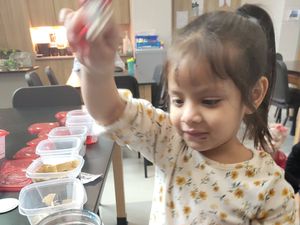



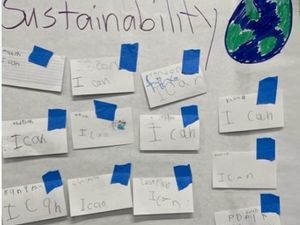
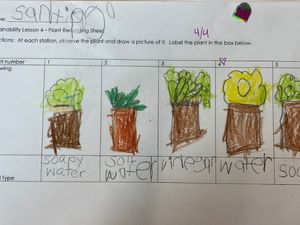
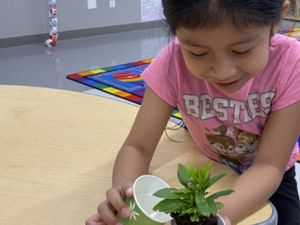
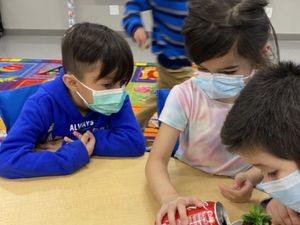


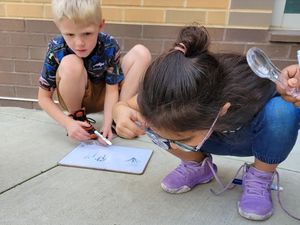
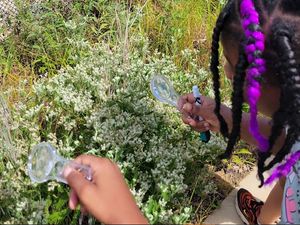



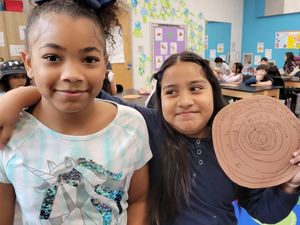
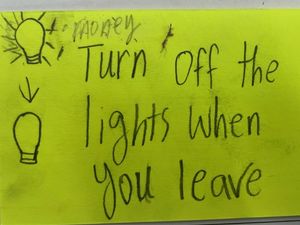

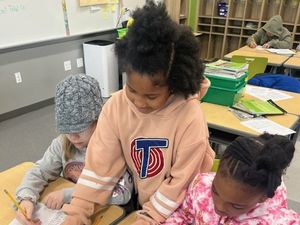





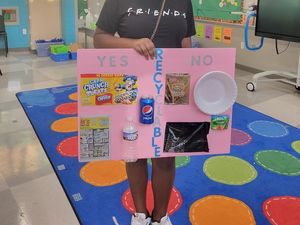
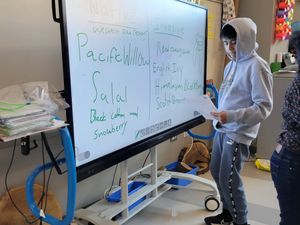
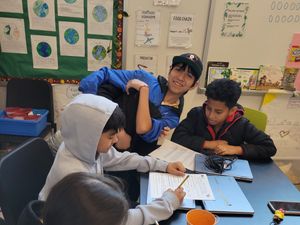



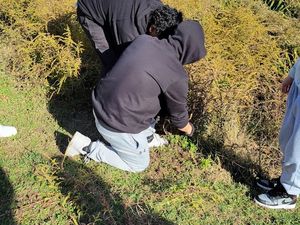



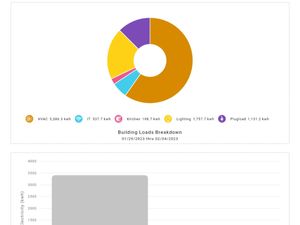
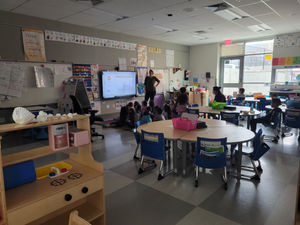

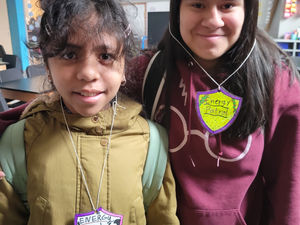
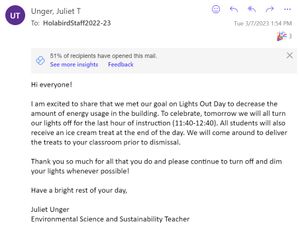




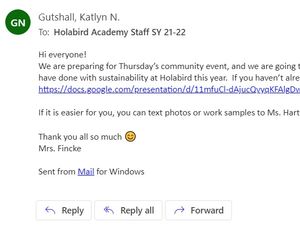
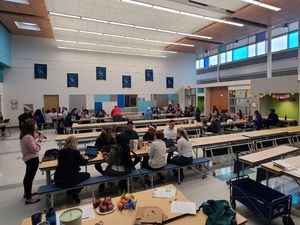


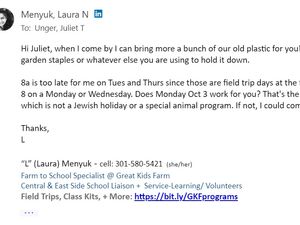
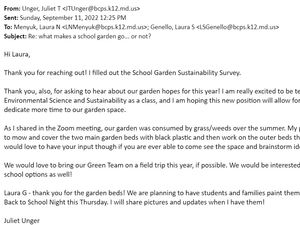
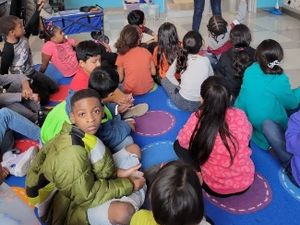
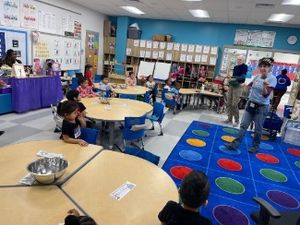
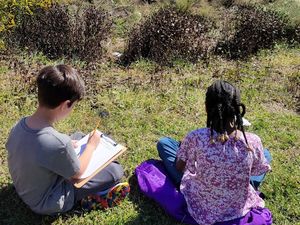

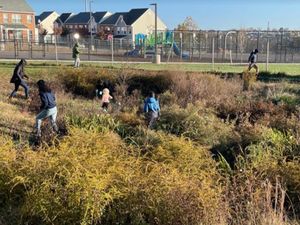








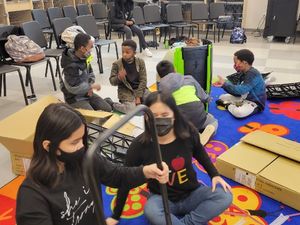
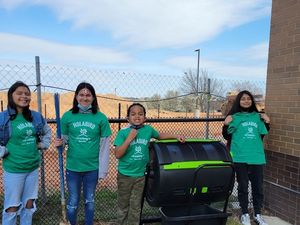
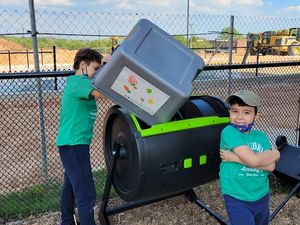



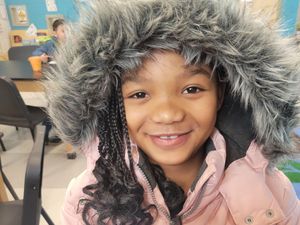



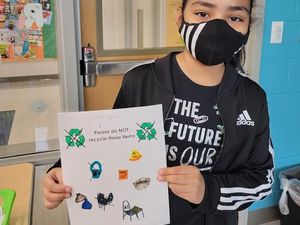
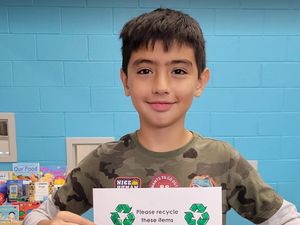


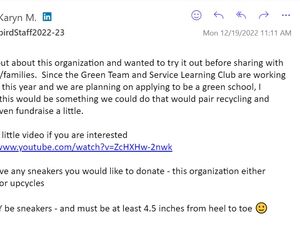


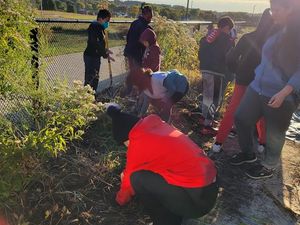
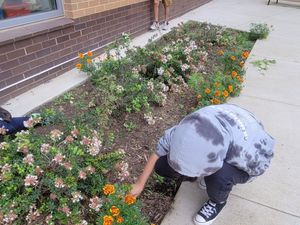

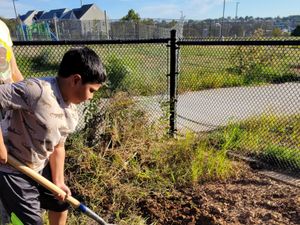


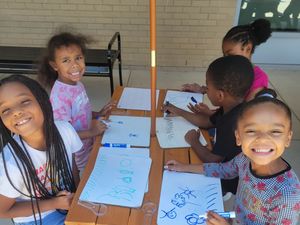



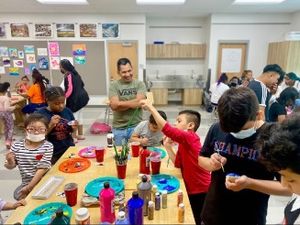
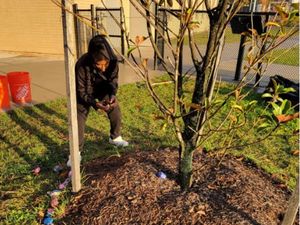
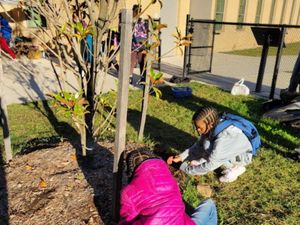

__20230301213835.jpg)
